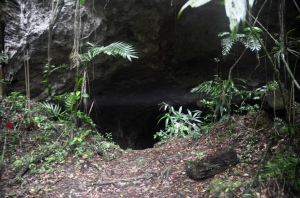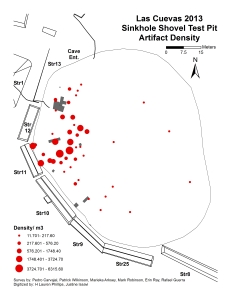By Jasmine Marshall Armstrong
When most people look at a pumping station or dam along California’s intricate water supply systems, they may think of technology, drought and the Golden State’s insatiable thirst.
Rina Faletti, a Postdoctoral Scholar for the UC Merced Center for Humanities and an art historian who studies the history of urban water systems, sees much more.
Trained in landscape theory and cultural geography at the University of Texas, Austin, where she received her doctorate, when Faletti looks at the 1910 neoclassical Sunol Water Temple in southern Alameda County, she sees an embodiment of the values of the culture which designed and built these water supply features into the temple’s architectural details.
“When someone looks at or imagines a ‘landscape’—whether it is a landscape painting or a garden, ‘wilderness’ or ‘nature’—that viewer perceives ideas and feels emotions that are a reflection of that culture’s ideas about what is beautiful and valuable,” Faletti explained. “My contention is these buildings were just as important as banks or churches, in their time, in conveying values.”
Using the example of the Sunol Water Temple, designed by Willis Polk in 1910 and built by the Spring Valley Water Company, which provided water service for San Francisco from 1860 – 1930, Faletti noted that neoclassical designs for waterworks structures shape the way we think about water.
“Viewers might admire the temple form of the buildings, and in turn admire the patrons of the buildings; in a sense this is a way in which art has been used to ground the public support of industrial capitalism, as a basis for American urban development. From another point of view, just as valid, the associations with ancient Greece and Rome confirm political foundations of a representative republic. Third, the neoclassical aesthetic permits an association with the Romans, whom American culture traditionally laud as being the most forward-thinking engineers in history. These are just three possible ways to interpret the aesthetic form of a neoclassical waterworks structure on a city water supply system,” she explained.
In her studies of water architecture in the American West, Faletti confronts the mythos of the landscape as something to be conquered and dominated, a philosophy writ large by historian Fredrick Jackson Turner during his 1893 talk on the significance of frontier during the Chicago World’s Fair.
“Turner interpreted the West in Romantic terms. The idea viewed settlers and explorers as independent heroes who represented Americans as a whole, who conquered a hostile land by continuously and ceaselessly moving across it,” Faletti noted. The American West was postulated as a ‘savage’ landscape in need of ‘civilization,’ and this point of view ignored the cultures of Native Americans, which already existed, and other perspectives besides those of male explorers and historians, Faletti said.
The “civilizing” values suggested by Greco-Roman water temples of the 19th and early 20th centuries also gave way to a romantic look backward at California’s own past in the Mission architecture of some water conveyance structures. Just east of Merced, beside Highway 140, sits a Pacific Gas and Electric substation built during this period which Faletti said provides a great example of Mission Revival in historic water architecture.
As the 20th Century moved into the Art Deco period, dams built as water reclamation projects often featured ornamental details and motifs. One such dam was the Hollywood Reservoir’s 1924 Mulholland Dam, named for Los Angeles Department of Water and Power engineer William Mullholland.
“It could be seen from everywhere in Hollywood,” Faletti said.
Today, the beauty of the dam is no longer visible, for a surprising reason: The failure of another Mulholland dam. In 1928, the St. Francis Dam, spanning the San Francisquito Canyon 40 miles north of Los Angeles, collapsed, resulting in a catastrophic flood which killed as many as 600 people.
Following the St. Francis Dam failure, the Department of Water and Power covered the Mullholland Dam with millions of acre feet of dirt backfill, according to Faletti. This took place during the height of the Great Depression, a time when Californians’ confidence in the state had been undermined.
“The politics of buttressing a dam that did not need bolstering were about the public perception of safety, not actual structural soundness,” Faletti said. Echoing her contention that a time period’s and a community’s values are reflected in its water architecture, Faletti noted that one engineer at the time denigrated aesthetic design elements of dams, which he saw as “feminine.”
Faletti said her scholarship has been enhanced by her time as a Postdoctoral Fellow for the Center for the Humanities at UC Merced, and noted how much she enjoys refining her water architecture scholarship.
“Water and power are beautiful problems to have, and both as human and as technological problems, they are not going away anytime soon. My job is to observe, record, and comment on the process, and it’s a privilege to provide that service to humanity,” she said.



